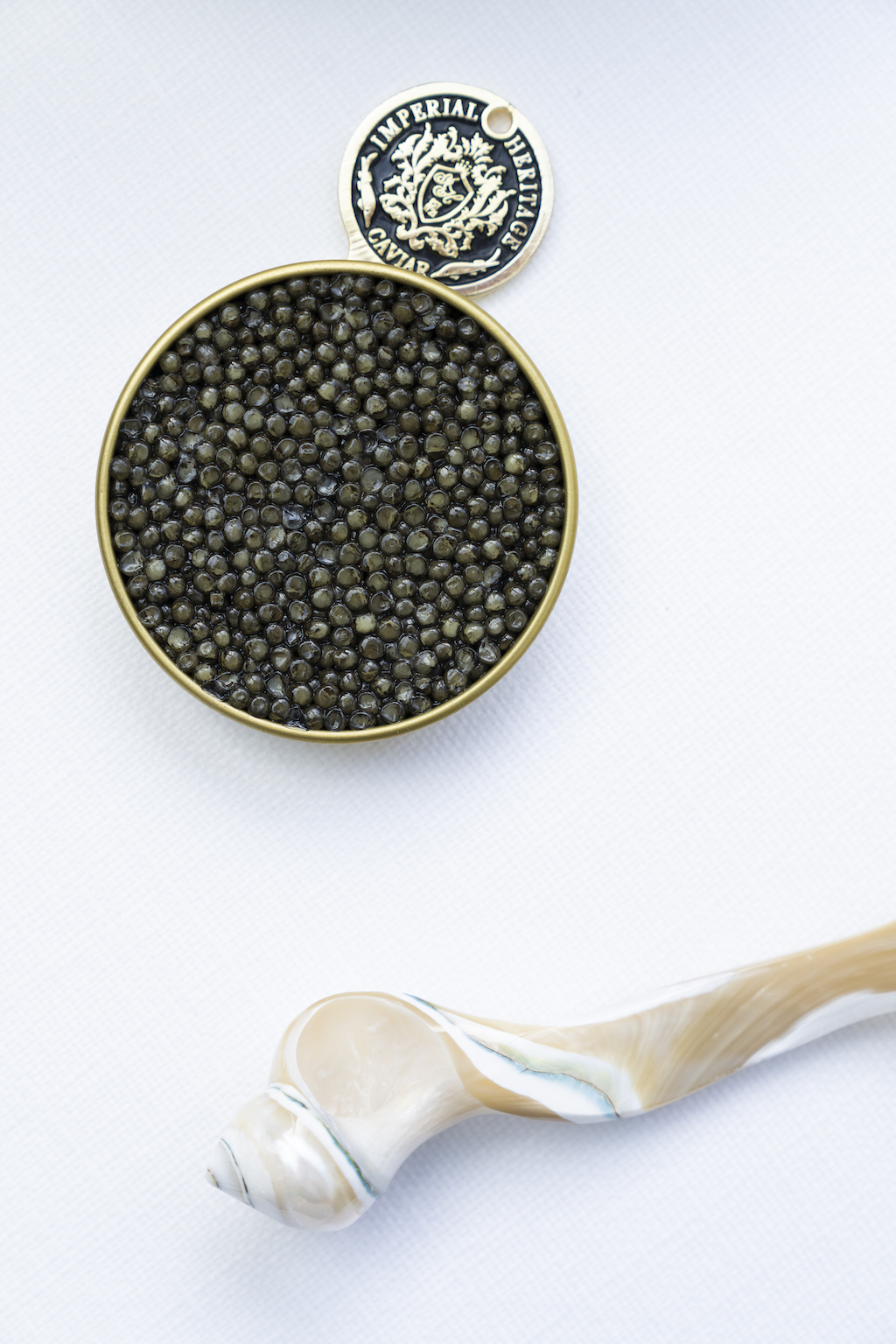The dark pewter-grey almost black roes of the Imperial Heritage ‘Oscietra Royal’ (Oscietra considered to be one of the more notable caviars) are characterized by a complex and rich flavor. Its sizeable grains take some recipes to a higher level thanks to their subtle taste of sea urching and nuts. But the more classic buttery and haselnut flavours of the Imperial Heritage ‘Trésor’ will do the trick as well. We tried both out in a vodka sauce pasta dish – a quite easy recipe even Michelin star chefs serve – for an unforgettable diner experience. And remember today it’s all about experiences definitely if you want so spoil your loved ones. For Valentine for instance.
Text Anja Van Der Borght
Ingredients for approx. 1 litre of sauce (can easily be frozen) – 6 persons
125 g French shallots
25 g unsalted butter
1,25 l chicken stock
4 kaffir lime leaves (take fresh ones preferably those from the freezer (for sale in Asian stores) NOT dried ones
0.175 l vodka
0,5 l cream 40%
white pepper from the mill
—-
100 g Linguine Piccole De Cecco No 8 (for sale eg. at Hanos in Wommelgem), choose ribbon pasta made with bronze dies 10 g chopped chives (optional). More for the visual aspect when serving. Tastewise we prefer without the chives so that the caviar taste would pop-out more.
—-
20 to 30 g caviar per person. Preferably Imperial Heritage Oscietra Royal Caviar but the less expensive Imperial Heritage Oscietra Trésor Caviar does the trick as well. We tried this recipe allready with other brands and kinds of caviar but the mentioned selection tastewise gives the best result.

Preparation:
Chop onion finely. Blanch them briefly in melted butter. Add chicken stock and kaffir lime, reduce by half, pour sauce through a colander. Then add vodka and cream. Season with white pepper from the mill. Simmer on a low heat for one and a half to two hours so that the alcohol disappears and the vodka is woven into the sauce and has a fine thickness. Leave to cool and rest overnight in a cool place. Do not worry if the sauce still is very liquid the pasta will absorb enough of the taste when you take it throught the sauce. One time our dish looked as if it was pasta without sauce but it still tasted divine.
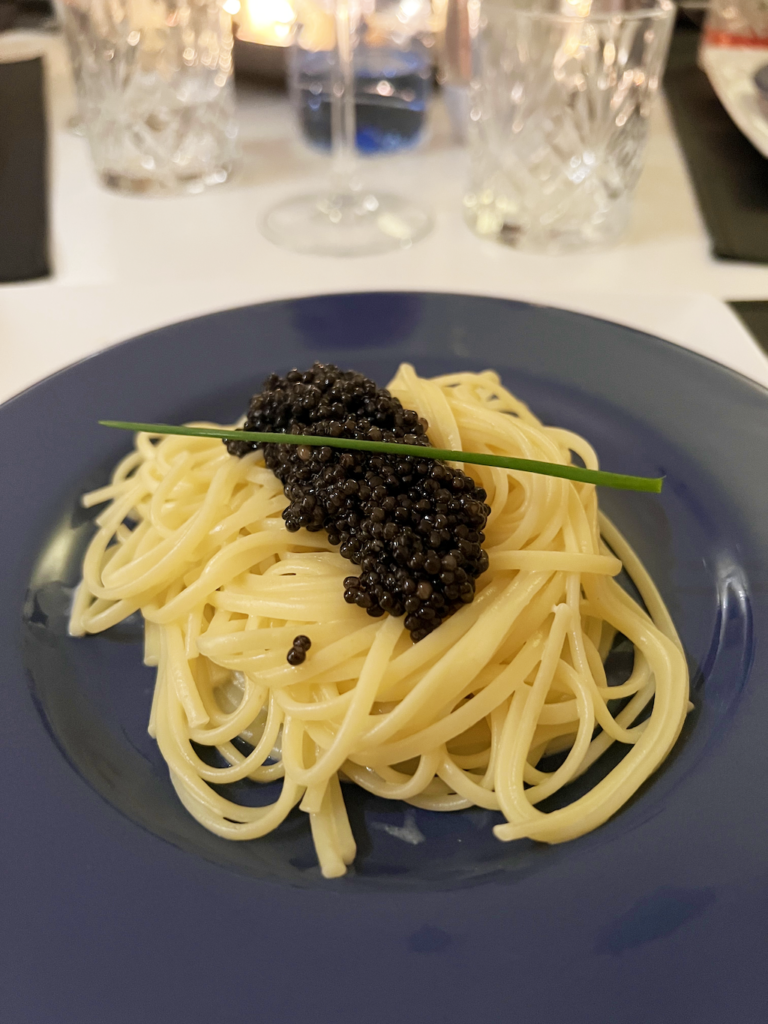
Just before serving:
Cook the pasta until just before al dente. Drain pasta and save the cooking liquid. Put a large pan on a gentle heat. Heat the sauce in it and pass the still-warm pasta through the sauce. Shake up the pasta so that the sauce sticks nicely to the pasta. To thicken the sauce, add some cooking water from the pasta, if desired, as its starch can provide extra cohesion (“mantecare”). Turn the pasta – so now al dente – up nicely with a two-tooth and place the pasta on a plate. If desired, serve some extra sauce next to the pasta on the plate if it is not too liquid. Place three quenelles of caviar on top of the pasta. Garnish lightly with freshly chopped chives.
The dark pewter-grey almost black roes of the ‘Oscietra Royal’ (as served below) are characterized by a complex and rich flavor. Its sizeable grains take your dish to a higher level thanks to their subtle taste of sea urching and nuts.
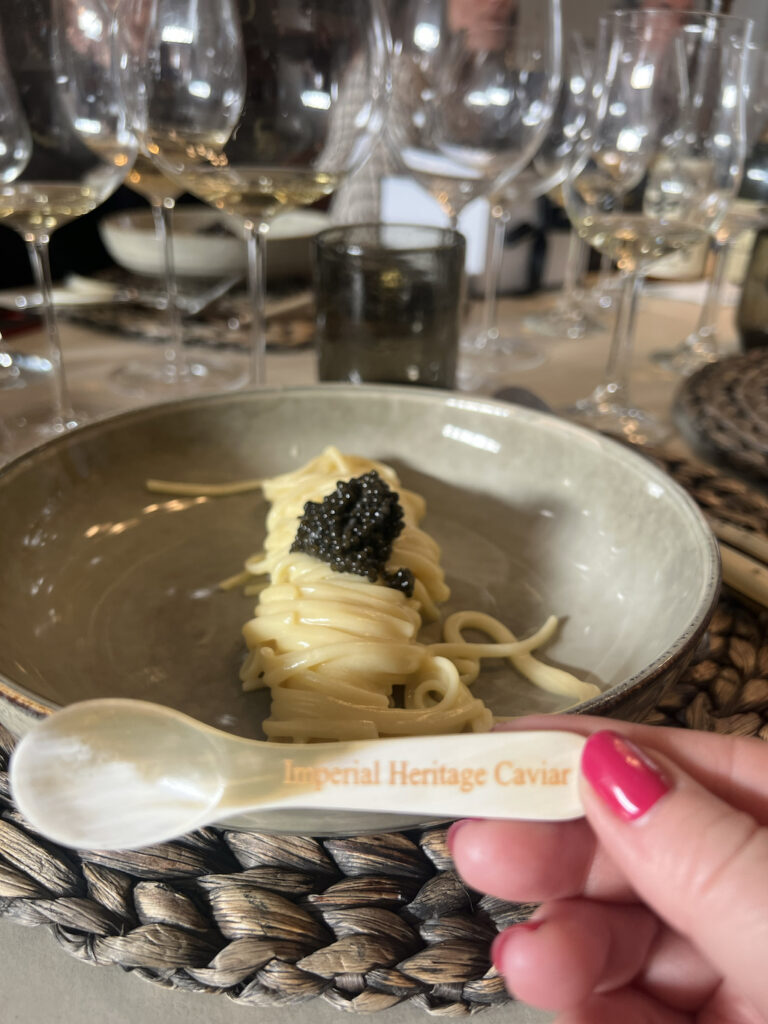
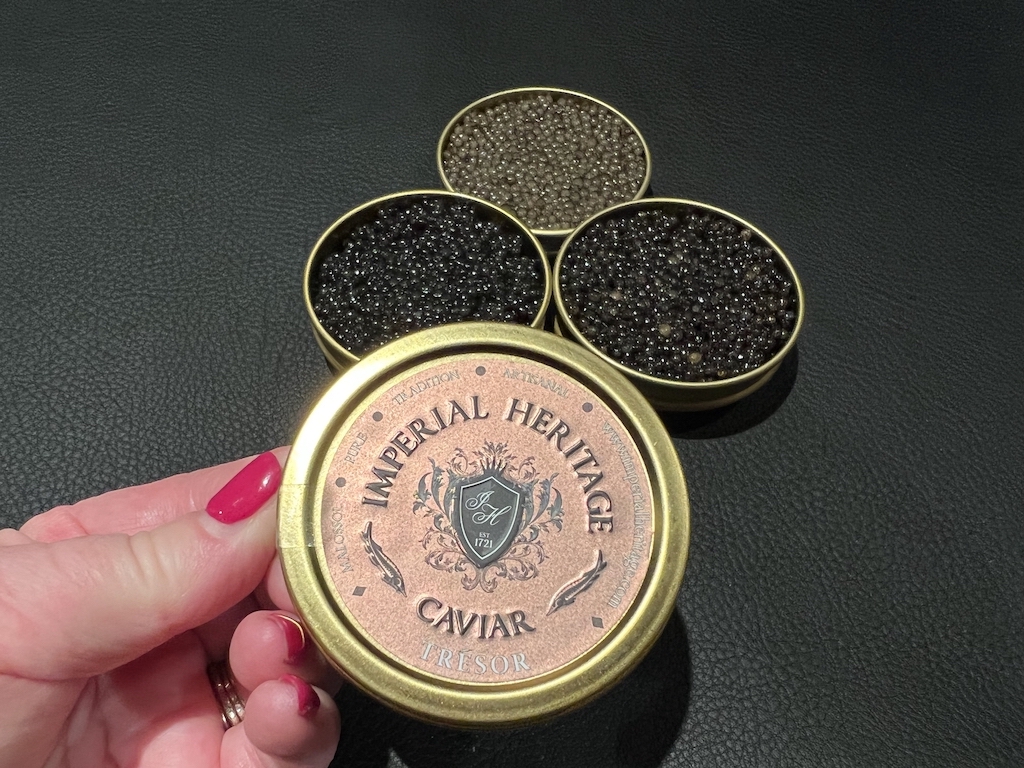
Why we’ve chosen the Imperial Heritage Oscietra Trésor caviar and another time the Imperial Heritage Oscietra Royal Caviar to serve with this dish?
– First of all because we once had the chance to try a dish like this during a caviar tasting and it tasted divine.
– Secondly because this is the way some renowed Michelin star chefs in Belgium serve it.
– We tried the recipe with other kinds of caviar but the result was not the same. Some caviars are too salty. The dark pewter-grey almost black roes of the ‘Oscietra Royal’ are characterized by a complex and rich flavor. Its sizeable grains take your dish to a higher level thanks to their subtle taste of sea urching and nuts. The medium-large eggs are complex and rich in flavor without secondary flavours. A typical Russian MALOSSOL caviar. Malossol meaning that it is mildly salted.

What makes Imperial Heritage Oscietra Royal caviar so unique?
– First of all it is aged for four months.
– Secondly the sturgeons for this caviar are like for the other caviars of Imperial Heritage sustainably breeded in open air aquaculture in the Lombardy Region (Italy) and Thessaloniki (Greece). In other words the sturgeons can enjoy day light and natural elements in the water bassins like natural food. “Sustainability is no doubt the keyword of the future, as it is the only way to ensure a future for current and next generations”, says Koenraad Peter Colman, founder of Imperial Heritage Caviar together with his wife Mrs Kristel Berghmans and their daughter Miss Elisabeth Colman. “Sustainable seafood is part of this philosophy.” Moreover Imperial Heritage Caviar is certified ‘Friend of the Sea’. This means the aquaculture farms produce without the use of growth hormone, respecting waters parameters and critical habitats.”
“We supervise the entire course of life of the fish, from the very beginning till maturity. Above that we provide a clean culture environment, to guarantee the perfect original taste of caviar without any risk of secondary undesired flavours”, Koenraad Peter Colman says. “Our Great Caviar Masters from Russia and Iran are treating and salting our caviar according to the old traditional recipes (Malossol – Russian term for “little salt” – under 3.7 % salt)). The supervision and final selection of these fine caviars is guaranteed by our family, carefully picked out, to select only the best caviar for our most appreciated gourmets… From father to daughter, all inspired by one passion: “the finest Caviar of the World”
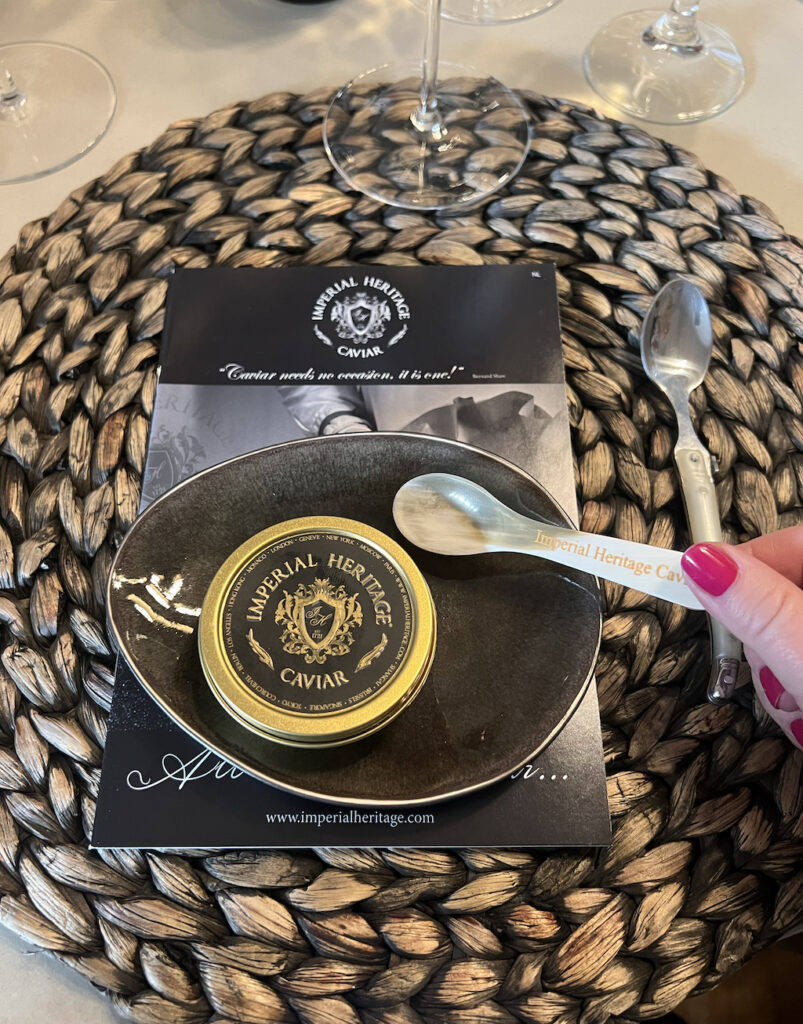
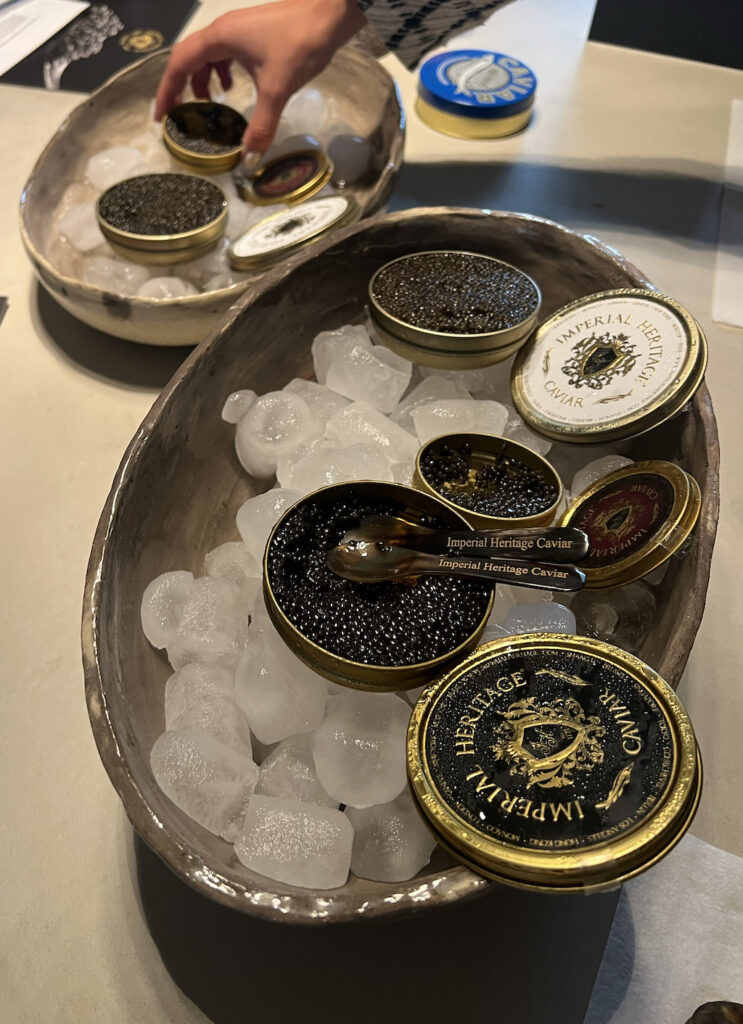
Serving caviar the right way shall not merely please the eye, also the palate.
How to serve caviar?
Firstly, caviar should always be served on ice!
For a simple presentation, keep it in the tin, placed on crushed ice. When it comes to serving caviar, placing the tin’s lid nearby is not only allowed, it’s customary.
Secondly, caviar should be served with a proper spoon!
From a simple glass server to mother of pearl hand carved spoons, the “table dressings” for serving caviar are as practical as they are pretty.
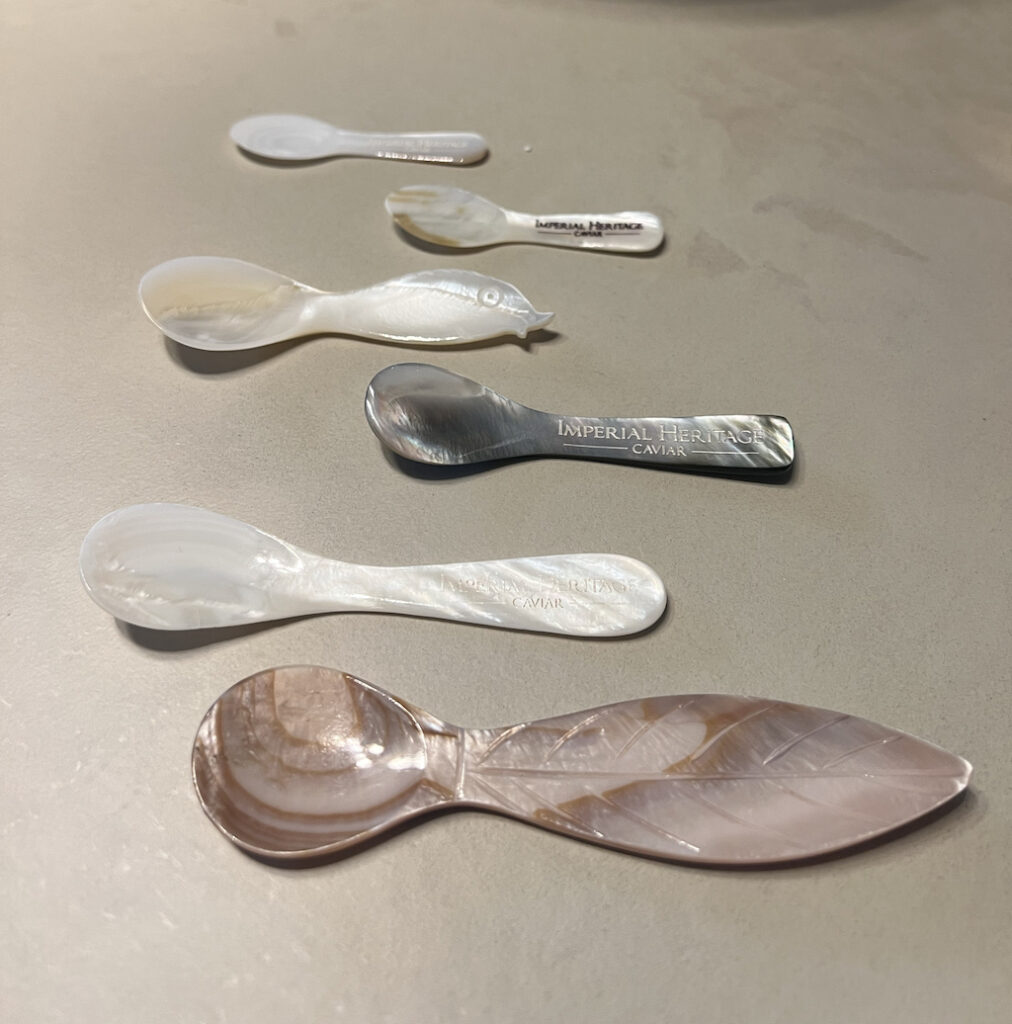
A mother of pearl or tortoise shell spoon is used to lift the delicate egg up vertically to avoid crushing it. Of course, it is not obliged to use mother of pearl spoons. However, be forewarned: caviar connoisseurs believe metal utensils spoil the subtle taste of caviar and they prefer to rather use plastic ware than risk sabotaging the savoury delicacy
The drink should not overwhelm the caviar!

What to drink with caviar ?
Traditionally, ice cold vodka (a neutral vodka, not spiced or flavoured) or dry champagne accompany caviar. But some white wines and sake kinds do the trick as well. The rule of thumb is not to serve any beverage or food that will overwhelm the caviar taste.
